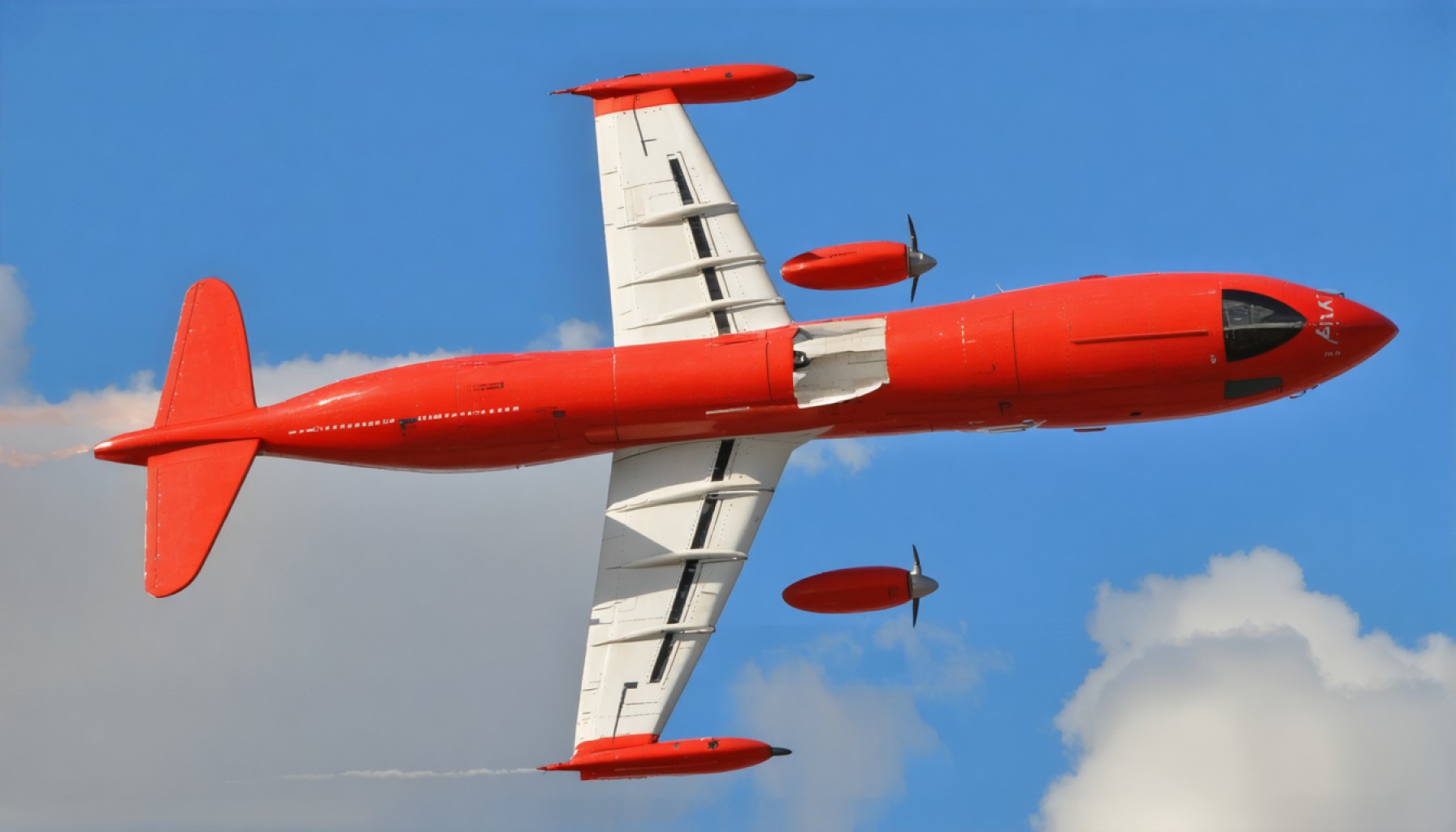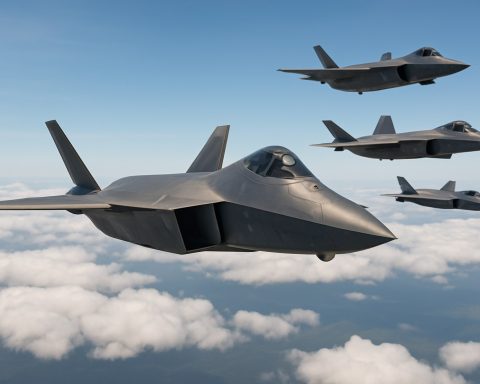- The near-miss incident involved Delta Flight 2983 and a U.S. Air Force T-38 Talon, highlighting potential risks in aviation.
- The Traffic Alert and Collision Avoidance System (TCAS) played a critical role, issuing a warning that allowed Delta pilots to avert disaster with swift action.
- This incident occurred near Reagan National Airport with the T-38s conducting a flyover for a memorial at Arlington National Cemetery.
- Federal Aviation Administration (FAA) investigators are examining the event, underscoring the need for enhanced safety protocols in congested airspace.
- The incident serves as a reminder of the ongoing importance of aviation safety systems and human expertise.
- The narrow escape emphasizes the balance of technology and pilot skill in ensuring flight safety.
Sunlight gleamed over the Potomac as Delta Flight 2983 climbed steadily into the sky, a modern marvel of precision piloting and technological prowess. Beneath the sparkling serenity lay a delicate and intricate dance of aviation traffic, orchestrated by an unseen body of controllers and digital assistants. But on this fateful day, as the Airbus A319 ascended from Reagan National Airport, a familiar but disconcerting tone filled the cockpit—a reminder of the perils that lie just a momentary lapse away.
The Traffic Alert and Collision Avoidance System (TCAS) screeched its lifesaving warning. This electronic guardian alerted the seasoned Delta pilots that a military aircraft, one of the agile U.S. Air Force T-38 Talons, buzzed dangerously close, threading through the invisible pathways coursing across the heavens.
In mere moments, instincts honed through countless hours of training took the helm. The pilots executed a maneuver with a precision akin to a maestro guiding an orchestra through a crescendo. The emergency protocol, ingrained into their muscle memory, dictated a swift ascent, steering clear of the potential calamity below.
The military jets, having been vectored towards Arlington National Cemetery for a somber flyover, moved in coordination from Langley Air Force Base. The board of inquiries will return to the drawing board, scouring records and replaying scenarios as investigators at the Federal Aviation Administration (FAA) scrutinize the sequence of events that transpired in the skies just miles away from tragedy’s recent footprint.
Just weeks prior, this same airspace, etched into the history with the sorrowful echoes of a catastrophic crash, bore witness to another untimely collision. It was a grim reminder that even in this era of advanced technology, the skies are not immune to peril.
As pressure mounts for stricter safety measures in Washington’s highly trafficked airspace, this narrow escape brings into sharp focus the critical importance of robust systems and the human expertise that animate them. Safety, a sacred pact in aviation, weaves its assurances through both machine precision and human judgment. The lifesaving moments at 30,000 feet underscore the continual quest for improvement, ensuring each journey concludes with the mundane sound of landing gear on tarmac—peace, safety, and a renewed commitment to vigilance.
The Hidden Heroes of the Sky: How Advanced Aviation Technology Prevented Disaster
The Incident: A Close Call in the Sky
The recent near-miss incident involving Delta Flight 2983 and a military aircraft over Washington D.C. underscores the crucial role of modern aviation safety systems and well-trained pilots. As Delta’s Airbus A319 ascended, its Traffic Alert and Collision Avoidance System (TCAS) blared warnings of an impending mid-air collision with a U.S. Air Force T-38 Talon, averting a potential disaster.
Understanding TCAS: The Silent Guardian
What is TCAS?
TCAS is an onboard system designed to reduce the risk of mid-air collisions between aircraft. It operates independently of ground-based equipment and constantly monitors the airspace around an aircraft, providing real-time alerts to pilots regarding potential hazards.
How Does it Work?
1. Detection: TCAS surveys the airspace for transponder signals from other aircraft.
2. Evaluation: It assesses the threat level based on the relative altitude and trajectory.
3. Alert: Provides audible warnings to the cockpit (e.g., “Traffic, Traffic”) if another aircraft comes too close.
4. Resolution Advisory: Offers corrective actions to pilots to avoid collision, such as climbing or descending.
This technology, while incredibly robust, requires pilots to execute maneuvers with rapid precision, highlighting the importance of continuous pilot training and experience.
The Role of Advanced Training
Pilot Expertise
Pilots undergo rigorous training simulations that prepare them for rapid response scenarios like the TCAS alerts experienced on Delta Flight 2983. This training instills a muscle-memory response, ensuring pilots act swiftly and correctly without room for error.
Airspace Safety: A Constant Evolution
Washington D.C. Airspace Challenges
The D.C. airspace is one of the most congested and strategically sensitive in the United States. The presence of frequent military operations adds complexity to its management, necessitating constant vigilance and coordination between civilian and military aviation.
Technological and Regulatory Enhancements
1. NextGen Initiative: The FAA’s Next Generation Air Transportation System (NextGen) aims to modernize air traffic management using satellite technology to improve safety and efficiency.
2. Safety Audits and Drills: Regular audits and emergency drills are conducted to adhere to high safety standards and ensure preparedness among airline and air traffic control staff.
Market Trends and Predictions
The aviation sector is witnessing a surge in digital transformation, with substantial investments in artificial intelligence and improved cockpit technologies intended to enhance safety protocols.
1. AI and Machine Learning: Predictive analytics powered by AI can offer predictive alerts before any potential TCAS alerts, allowing early intervention strategies.
2. Remote Tower Systems: The implementation of remote tower technology could further optimize air traffic management in complex airspaces.
Quick Tips for Air Travelers
1. Stay Calm: In rare events of flight irregularities, trust in the pilots and technology that work to ensure safety.
2. Understand Safety Protocols: Familiarize yourself with in-flight safety instructions, which enhances your confidence in the event of unexpected occurrences.
Conclusion and Recommendations
The narrow escape of Delta Flight 2983 serves as a potent reminder of aviation’s innate challenges and the ongoing commitment to safety. Continuous innovation in technology and training is paramount to maintaining high standards of air travel safety. Passengers can fly confidently knowing that both machine and human elements are constantly working in tandem to protect each journey.
For more insights into advancements in the aviation industry and air travel tips, visit the FAA and stay informed about the latest developments.







